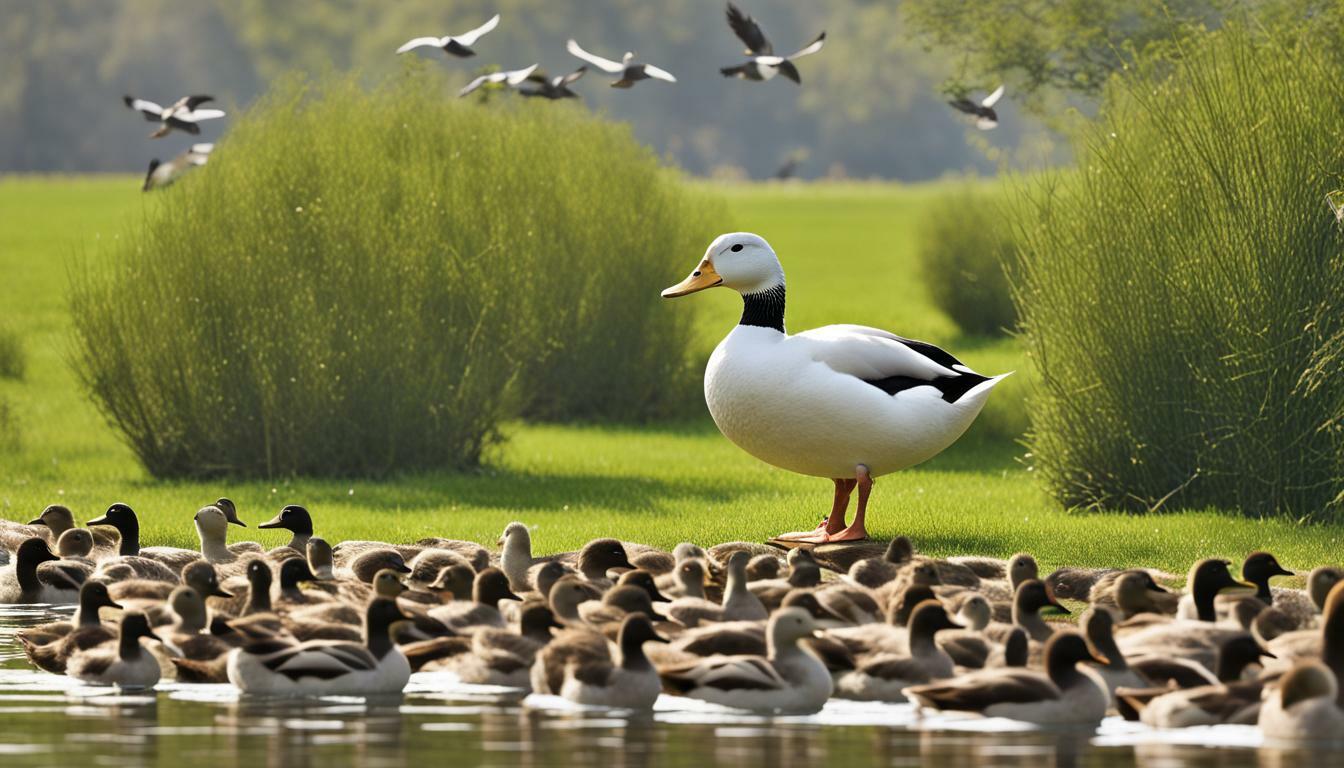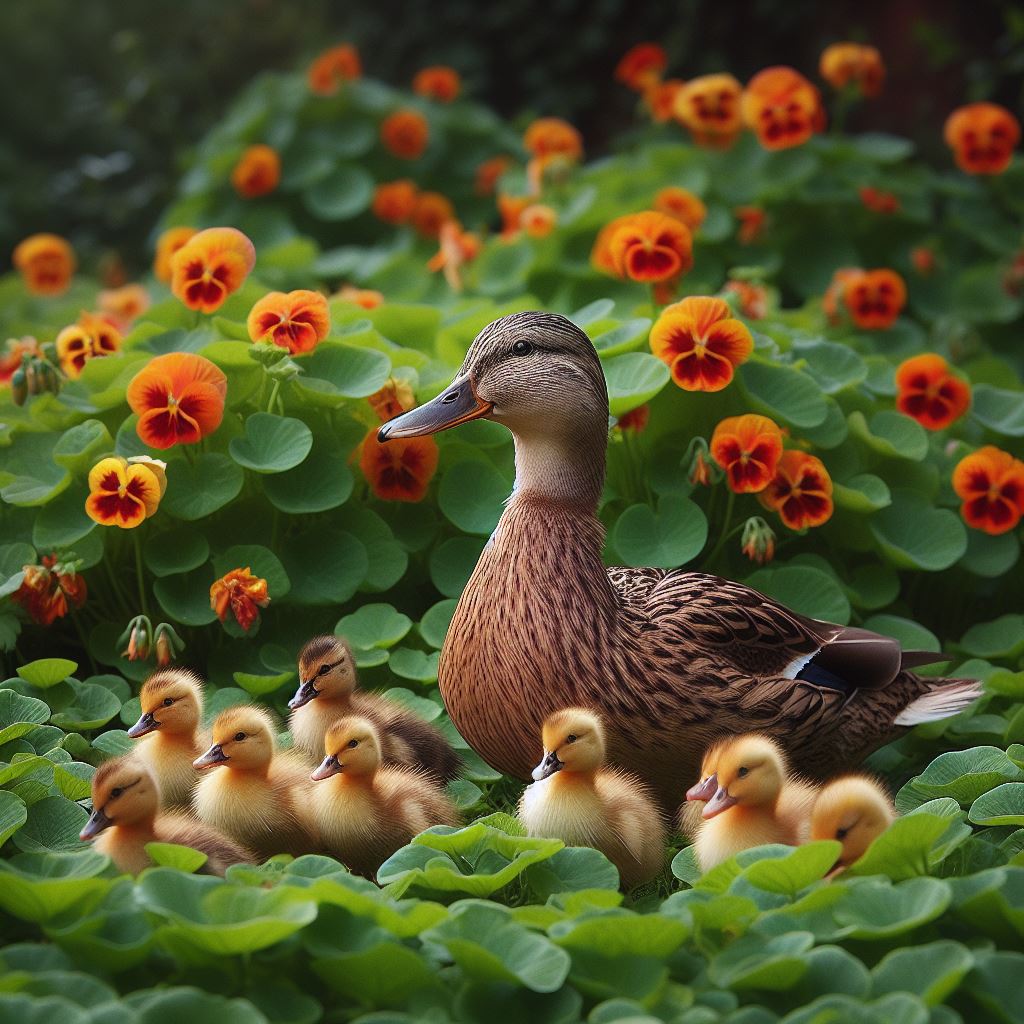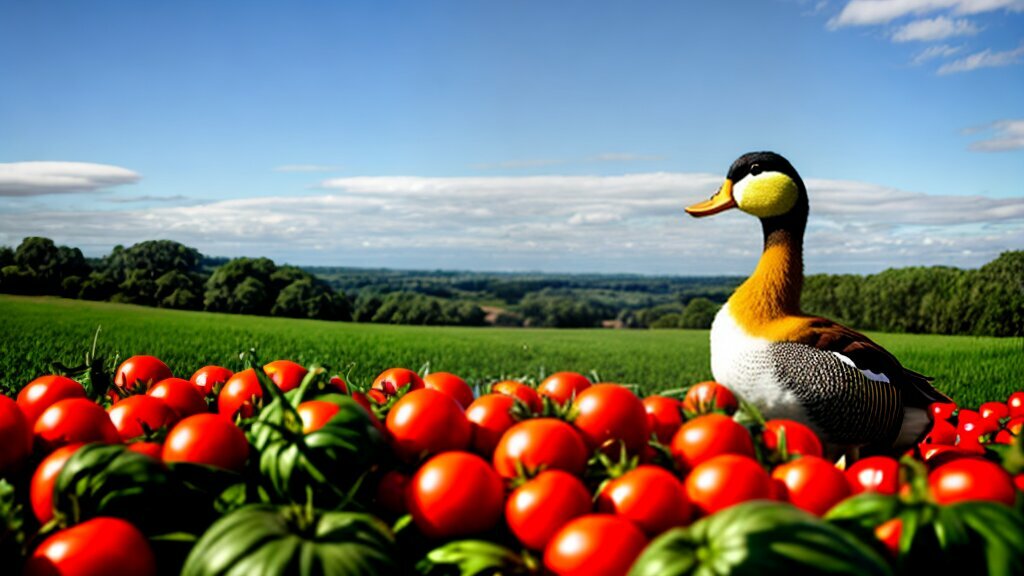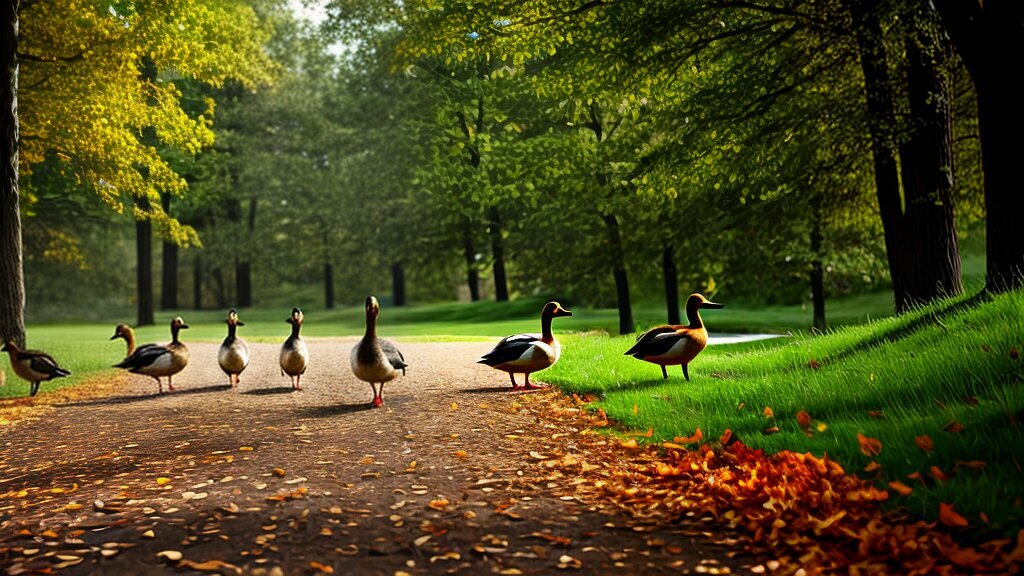Why Can’t Domestic Ducks Fly? Understanding in Detail

Table of content:
Domestic ducks are a common sight on farms and in backyards, often amusing us as they waddle around. But unlike their wild relatives, domestic ducks cannot fly. This raises the question – why can’t domestic ducks fly?
How Domestication Changed Ducks
Humans began domesticating ducks over 4000 years ago. Domestication has radically changed the anatomy of ducks, compared to their wild relatives.
Selective breeding for meat production and egg-laying caused domestic ducks to gain far more weight than wild ducks. While a wild duck weighs around 1-3 lbs, domestic ducks average 7-8 lbs. Some domestic duck breeds weigh up to 12 lbs.
This extra body weight makes it difficult for domestic ducks to fly. The increased percentage of body fat also makes their bodies less streamlined and buoyant.
Domestication has also changed the wings of ducks. Selective breeding reduced wing size in domestic ducks so they would stay close to their home and not migrate. Smaller wings mean less lift generation.
Domestic duck wing bones are also not as hollow and lightweight as wild duck wings. Their flight muscles are smaller and weaker as well, lacking the power needed for flight.
How Anatomy Limits Flight in Domestic Ducks
The anatomical differences between wild and domestic ducks explain why domestic varieties struggle to get airborne. Here’s a closer look at how domestic duck anatomy limits their flight capabilities:
Weight
The heavy body weight of domestic ducks means they must work harder to generate enough lift and thrust to get airborne. The average 7-8 lb domestic duck is more than double the weight of a 2-3 lb wild duck. Their dense, fat-laden bodies are not streamlined enough for efficient flight.
Wingspan
Domestic ducks have a smaller wingspan of only 1.5-2 feet compared to the 2-3 foot span of wild ducks. Shorter wings reduce the surface area available to generate lift.
Wing Shape
Selective breeding of domestic ducks favored rounded, short wings rather than the long, pointed wings of wild ducks optimized for flight. The rounded wing shape does not efficiently split the air for lift creation.
Wing Bones
Wing bones in domestic ducks are thicker and less hollow than wild ducks. Solid bone is heavier, requiring more work to flap the wings.
Flight Muscles
Domestic ducks have smaller pectoral muscles than wild ducks. Their breasts are also wider rather than streamlined. Less muscular power available makes takeoff more difficult.
Feather Quality
Feathers of domestic ducks tend to be smaller with shorter quills. Less overlap between feathers can reduce smooth airflow over the wing surface.
With all these anatomical disadvantages, it is easy to see why domestic ducks struggle to get their feet off the ground, while wild ducks take easily to the skies.
Can Domestic Ducks Fly Short Distances?
While most domestic ducks cannot achieve true flight, some individual domestic ducks can fly short distances. Domestic ducks are occasionally able to generate just enough lift with rapid wing-flapping to briefly get airborne.
How well individual domestic ducks fly depends on their:
- Breed – Some breeds like Indian Runner Ducks are lighter.
- Size – Smaller ducks have an easier time flying.
- Wing Span – Ducks with larger wings can generate more lift.
- Strength – More muscular ducks flap wings more powerfully.
- Age – Younger ducks may be able to fly better than older ducks.
- Takeoff Surface – Long grass or water helps ducks take off.
A domestic duck may be able to fly up to 100 meters (330 feet), but any sustained or controlled flight is difficult. They lack the muscular and cardiovascular endurance for any distant flight.
While brief flight is possible, most domestic ducks lack the anatomy and physiology for the kind of flight speeds and durations seen in wild ducks.
Why Did Domestic Ducks Lose Flight Ability?
Domestic ducks lost their ability to fly efficiently because humans selectively bred them that way over generations. Domestication aimed to produce ducks optimized for egg and meat production rather than flight.
Here are some of the reasons domestic ducks were bred to minimize flight capability:
- Containment – Flightless ducks stay close to the farm or home. Farmers didn’t want ducks wandering off or migrating seasonally.
- Meat Production – More weight from fat deposition increases meat yields. Heavy ducks with oversized breasts were favored.
- Egg Production – Channeling energy towards egg-laying rather than flight muscles benefited farmers.
- Appearance – Short, rounded wings were considered attractive. Long pointed wings were bred out.
- Temperament – Reduced flight response produced calmer ducks easier to handle.
The result after thousands of years of selective breeding are ducks adapted for domestic life rather than flight.
Are There Any Domestic Duck Breeds That Can Fly Well?
While most domestic duck breeds are incapable of sustained flight, there are a few breeds that retain greater flight capabilities:
Indian Runner Ducks
These upright ducks have elongated bodies and are the lightest domestic duck breed at 3-4 lbs. Their lightweight build enables some flight ability. They can flap their wings to ascend short heights.
Bantam Ducks
Miniaturized versions of standard duck breeds, bantams only weigh 1-2 lbs. Their tiny size allows these domestic ducks to muster short flights despite having smaller wings.
Campbell Ducks
This medium-weight general purpose breed can achieve short flights. Males and younger birds fly better than heavier adult females.
Magpie Ducks
One of the few domestic duck breeds retaining long wings, Magpie ducks have reasonable flight capability. Their long wings provide enough surface area to generate lift.
However, sustained flight, migration and the aerial agility of wild ducks remain beyond the abilities of even these domestic breeds. Selective breeding for commercial traits still impacted their anatomy.
Can Domestic Ducks Regain Flight Ability?
Is it possible to restore flight ability in domestic duck breeds? Perhaps over many generations, selective breeding could re-evolve domestic ducks optimized for flight rather than food production.
Essential anatomical features like light streamlined bodies, long pointed wings, large flight muscles and extensive energy reserves would need to be re-established.
However, there is little incentive for poultry producers to select for flight capacity. Farmers want ducks to remain where they are put. Flight ability would be seen as a drawback rather than beneficial.
Breeding to enhance flight may also have negative impacts on meat and egg yields that rely on diverting energy away from flight adaptation.
While re-evolving domesticated flight ability would be interesting scientifically, commercial pressures mean domestic ducks are likely to remain flight challenged compared to their wild counterparts.
Why Don’t Domestic Ducks Migrate?
Unlike migratory wild ducks, domestic ducks do not migrate to warmer climates in winter. Domestic ducks remained on the farm year-round. But why did they lose this ancient migratory instinct seen in wild ducks?
Domestication changed migratory urges in ducks both behaviorally and physiologically:
- Containment – Farmers prevented wandering by clipping wings and wing muscles that limited long flights.
- Food – With a constant reliable food source provided, ducks did not need to migrate to find food.
- Shelter – Access to man-made shelters removed the need to migrate for survival.
- Breeding Cycles – Domestic ducks can breed year-round rather than seasonally, removing some migratory cues.
- Fat Reserves – Domestic ducks have lost the ability to build up large fat and muscle reserves required for long flights.
- Navigation – Domestication may have degraded the innate celestial and geomagnetic navigation abilities used by migrating wild ducks.
In essence, human care provided for all the duck’s needs in one place year-round. Over time, migratory instincts faded when no longer essential for survival.
Final Thoughts
In summary, domestic ducks cannot fly primarily due to their heavy weight, short rounded wings, inadequate flight muscles and lack of streamlining resulting from selective breeding. While some domestic ducks can fly briefly, true sustained flight comparable to wild ducks remains beyond their physical capabilities. Domestication focused on meat and egg production and valued flightlessness. Restoration of flight instincts would require intense selective breeding for flight traits. Since flight provides no benefit to farmers, domestic ducks are likely to remain land-bound into the future. Their wild relatives will continue to migrate the skies each year while domestic ducks waddle contentedly on land.
Welcome. I’m Adreena Shanum, the proud owner of this website, and I am incredibly passionate about animals, especially poultry. I founded adreenapets.com as a labor of love, stemming from my desire to share my knowledge and experiences with poultry enthusiasts worldwide.




